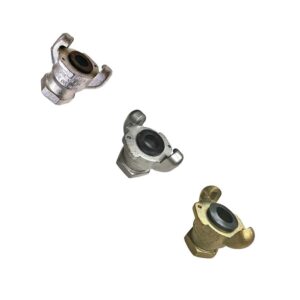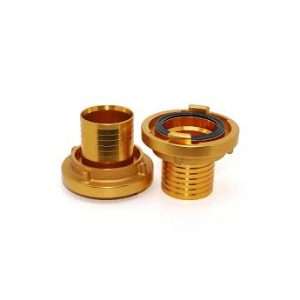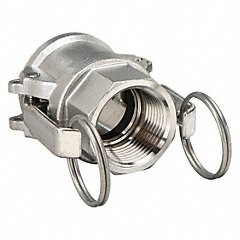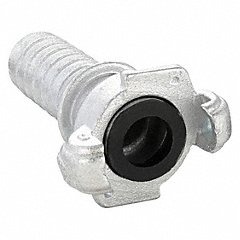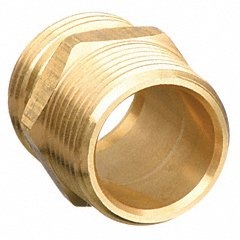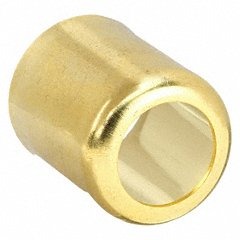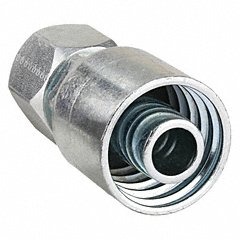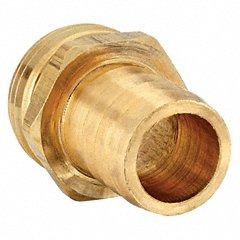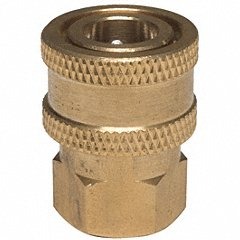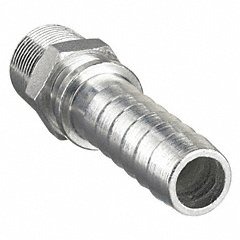
There are about ten types of hose couplings in our daily work and life, each designed for a specific application and industry. Here are some common hose coupling types:
- Chicago couplings: Chicago couplings in 2-lug and 4-lug styles in plated malleable iron, brass, and 316 stainless steel, as well as Chicago coupling-compatible hose clamps and replacement parts & accessories.
Chicago couplings - Camlock Couplings:
- Storz Couplings:
- Mainly used in firefighting and industrial applications.
- Durable and leak-free.
- Suitable for high-pressure applications.
Storz Couplings
- Threaded Couplings:
- Couplings with male and female threads, commonly used in plumbing, irrigation, and industrial applications.
- Suitable for low to high pressure.
- NH/NST thread
- NPT thread
- BSP or NPT thread
NPT Pipe Fittings
- Quick Disconnect Couplings:
- Barbed Couplings:
- Couplings with barbed ends for gripping hoses, often used in low-pressure applications.
- Typically made of plastic, brass, or stainless steel.
- Universal Air Couplings:
- Specifically designed for air and pneumatic applications, featuring quick-connect designs.
- Dry Disconnect Couplings:
- Couplings used for minimizing fluid loss during disconnection, commonly found in handling hazardous chemicals and fuels.
- Fire Hose Couplings:
Fire Hose Couplings - Specialized couplings designed for firefighting applications to ensure secure hose connections.
- Claw Couplings:
- Couplings used in industrial settings for transferring liquids, gases, and solids.
- Combination Couplings:
- Couplings that combine features of different types to meet specific needs.
These coupling types are widely used in various industries and applications, each with its own advantages and suitability for specific tasks.
If you have any questions about this, please get in touch with our pre-sales managers or engineers. They are here to help you find the best hose coupling solution that you need.
Get High-Quality Hose Coupling
接头在软管操作中扮演着至关重要的角色;然而,只有品质优良的接头才能确保高质量的运行。自2001年以来,Sinopulse 一直致力于为客户提供业内一流的气动和液压软管接头。我们提供现场服务,并拥有卓越的客户服务团队,可实现当日订单确认和多种发货方案,以满足您的需求。如需了解更多关于软管接头和连接件的信息,请联系我们或在此处获取报价。
Hose coupling are important to hose, only high-quality fittings can ensure high-quality operation. Since 2001, Sinopulse has been committed to providing customers with industry-leading pneumatic and hydraulic hose couplings and fittings. For more information on hose fittings and connections, please contact us or get a quote here.
Hose Coupling FAQs
Still a little confused? Here are some common questions.
Q: What are Hose Coupling
A: A hose coupling is a connector on the end of a hose that connects it (or hooks it up) to another soft hose or to a faucet or hose appliance, such as an irrigation sprinkler. Industrial hose couplings are typically made of steel, brass, stainless steel, aluminum, or plastic. Due to the wide variety of designs and the number of countries in which they were created, it is difficult to track the origins of many.
Q. What Materials Are Hose Couplings Made Of?
Hose coupling are made of materials such as stainless steel, cast iron, and brass. The specific material choice depends on the application scenario and performance requirements.
Q. What Sizes Do Hose Couplings
To determine the size of a hose fitting, you need to determine the hose's inner diameter and your usage requirements, including the required flow rate and the size of the original fitting.
Q. What Application Do Hose Couplings
Hose couplings are suitable for different types of systems and are used in various fields: low-pressure air hose coupling, sandblasting couplings, hose clamp coupling for industrial hoses, and pump coupling. Hose couplings are commonly used in fluid transfer, pneumatic systems, or gas delivery systems.
Q. How to Install Hose Coupling
The main installation methods for hose connectors include compression fitting, threaded connection, flange connection, welded connection, grooved connection, socket connection, and quick-release coupling. The specific method should be chosen based on the material and application scenario.
Q: What are fire hose connectors called?
A: Fire hose connectors are often called couplings. They are found on the end of a hose and are used to connect to another hose, a faucet, or a water source.
Q: What are Camlock Couplings
A: Cam coupling, also known as cam lock coupling, is a form of hose coupling. This coupling is popular because it is an easy and reliable means of quickly connecting and disconnecting hoses without tools. Camlock couplings are commonly available in several materials, including stainless steel, aluminum, brass, and polypropylene.
Q: What are most common types of cam and groove coupling
- adapter (male end) with female thread, e.g. BSP or NPT
- coupler (female end) with male thread, e.g. BSP or NPT
- coupler with shank (hose barb)
- coupler with female thread
- adapter with shank
- adapter with male thread.
Q: What are Bauer Coupling
A: Bauer couplings provide a quick and easy way to connect many hoses together. They are commonly used for pumping and transferring water in the construction, road maintenance and general irrigation industries. They can also be used to load and unload road tankers including slurry oil tankers.
Q: What Are Garden Hose Couplings?
A: Garden hose couplings are used to connect a garden hose to a water source or fittings, or to connect two pieces of garden hose together. Garden hose couplings are also called garden hose fittings or connectors.
No matter what type of assembly you need, or if you are still unsure, Sinopulse can help you to select the best hose assembly, couplings, and coupling attachment method based on your specific use. Contact us to continue the discussion.
